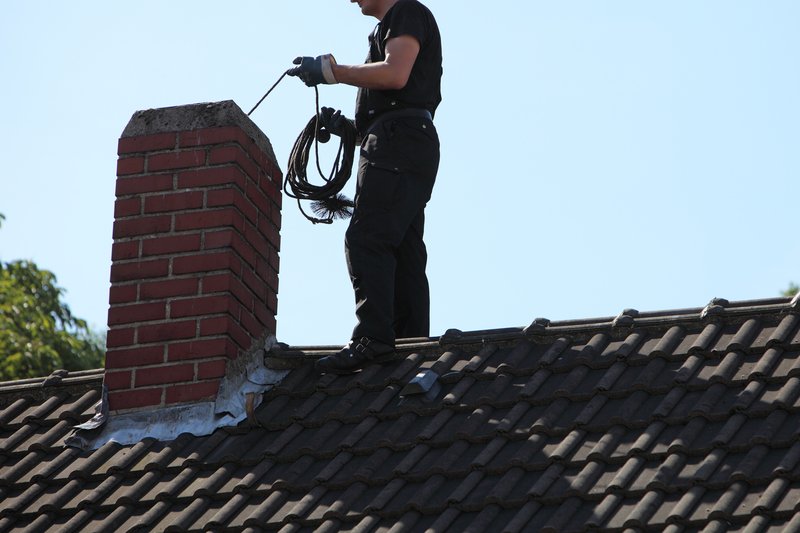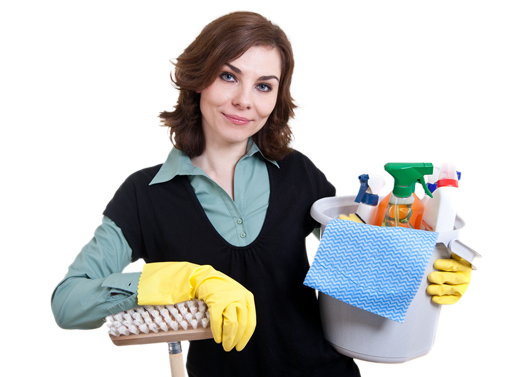Preserve Bathroom Beauty with Mold-Free Practices
Posted on 16/06/2025
Preserve Bathroom Beauty with Mold-Free Practices
Maintaining a beautiful bathroom is a goal for every homeowner. An essential part of achieving this is keeping it fresh, clean, and above all, mold-free. Mold can quickly become an unsightly, unhealthy problem, damaging not just the aesthetic of your space, but also your home's structure and your well-being. In this comprehensive guide, discover the best mold prevention and removal strategies to preserve your bathroom's charm and functionality.
Why Mold is a Threat to Bathroom Beauty and Health
Mold thrives in damp, humid environments--making bathrooms especially vulnerable. It often appears as black, green, or even pink spots along grout lines, behind toilets, under sinks, or on the ceiling. Beyond its ugly appearance, mold can:
- Cause persistent, unpleasant odors
- Trigger allergies and respiratory issues
- Discolor tiles, walls, and fixtures
- Damage wood, drywall, and structural elements
Preserving bathroom beauty requires an active stance against these mold outbreaks. Understanding both the causes and the best mold-free practices is key.

Understanding Mold Growth in Bathrooms
To effectively prevent mold in the bathroom, it's important to know how it develops. Mold spores exist everywhere but need moisture, warmth, and organic material (like dust, soap scum, or wood) to thrive. Hot showers, poor ventilation, and leaks create the perfect storm for mold to colonize your bathroom.
Common Places Mold Hides in the Bathroom
- Grout between tiles on floors and walls
- Under and behind sinks and cabinets
- Beneath bath mats or rugs
- Ceilings and corners near showers
- Silicone caulking around tubs and sinks
- Inside toothbrush holders, soap trays, or even on shower curtains
Spotting mold early and regularly inspecting these areas can significantly help with maintaining a mold-free bathroom.
Essential Mold-Free Bathroom Practices
Preventing mold is much easier and cheaper than dealing with a full-blown infestation. Here are proven practices to preserve your bathroom's beauty by keeping it mold-free:
1. Control Humidity and Moisture
- Ventilation: Always run an exhaust fan during and after showers, or open windows to allow moisture to escape. Ideally, let the fan run for at least 20 minutes post-shower.
- Wipe Down Surfaces: Regularly wipe tiles, countertops, shower doors, and even mirrors to prevent water accumulation. Use a squeegee after each shower for tiles and glass.
- Fix Leaks Immediately: A dripping faucet, running toilet, or leaky pipe constantly introduces moisture. Routine checks and quick repairs stop mold in its tracks.
- Use a Dehumidifier: In windowless bathrooms or high-humidity homes, a compact dehumidifier can hugly reduce moisture levels.
2. Choose Mold-Resistant Materials
- Mold-Resistant Paint: Repaint bathroom walls with specialty mold- or mildew-resistant formulas to block spore attachment.
- Grout and Caulk: Use waterproof, anti-mold grout and silicone to seal gaps and cracks.
- Replace Porous Materials: Consider swapping carpets, wood, or fabric window coverings for tile, glass, or plastic alternatives that resist hold moisture.
3. Clean Regularly with Mold Prevention in Mind
- Weekly Cleaning: Focus on scrubbing tiles, grout, faucets, and all nooks with a good antifungal bathroom cleaner.
- Laundry: Wash bath mats, towels, and shower curtains frequently. Use hot water and dry them thoroughly before putting them back.
- Declutter: Limit products and unnecessary decor which can trap moisture and block airflow, encouraging mold in hidden spots.
4. Improve Air Circulation
- Keep Doors and Windows Open: When possible, leave the bathroom door or window open after use to aerate the room.
- Ceiling Fans: Install or use a ceiling fan to keep air circulating, particularly in larger bathroom spaces.
5. Monitor and Repair Grout and Caulk
- Inspect Sealants: Check grout and caulk lines for cracks or damage. Remove and reapply as needed to prevent water intrusion.
- Use Mold-Resistant Products: Opt for advanced sealants designed to prevent mold growth for long-lasting protection.
6. Utilize Natural Mold-Prevention Solutions
- Vinegar: Spray white vinegar on tiles, grout, and glass surfaces to naturally deter mold and mildew. Leave for an hour before wiping off.
- Baking Soda: Sprinkle baking soda on trouble spots or add to cleaning water as a gentle abrasive and odor neutralizer.
- Lemon Juice: The citric acid in lemons helps break down mold stains while adding a pleasant scent.
- Tea Tree Oil: Known for its antifungal properties, a few drops mixed with water can be sprayed on mold-prone areas.
How to Remove Mold and Restore Bathroom Beauty
If mold has already taken hold, don't panic. Below are effective steps for removal and restoring your bathroom's fresh look:
Step 1: Protect Yourself
- Wear gloves, eye protection, and a mask when cleaning mold to prevent skin contact and inhalation.
Step 2: Clean and Disinfect
- Use a mold killer spray (store-bought or homemade) on all affected areas--tiles, grout, walls, and fixtures.
- Allow the solution to sit for 15-30 minutes, then scrub with a stiff brush or sponge.
- Rinse with warm water and dry thoroughly.
Step 3: Remove and Replace Damaged Materials
- If grout, caulk, or drywall is deeply infested or stained, cut out and replace the affected sections.
- Apply mold-resistant replacements for long-term protection.
Step 4: Prevent Mold Returning
- Follow the prevention steps above
- Consider regular applications of antimicrobial sprays to hotspot areas
Pro tip: For infestations covering more than 10 square feet, consider hiring a professional to ensure safe and thorough mold remediation.
Innovative Products for a Mold-Free Bathroom
Thankfully, the market offers a suite of products specifically designed for mold-free bathroom maintenance. Consider adding these to your cleaning arsenal:
- Mold-Resistant Shower Curtains: Opt for polyester, PEVA, or mold-inhibiting liners that repel moisture and are machine-washable.
- Antifungal Tile Sealers: Yearly application keeps moisture from seeping into grout and tile surfaces.
- High-Efficiency Bathroom Fans: Models with humidity sensors automatically turn on when moisture levels spike, then shut off when dry.
- Squeegees and Microfiber Cloths: Make it simple for everyone to quickly wipe down surfaces after showers or baths.
- Digital Hygrometers: Monitor humidity to ensure it stays below 50% -- the threshold for mold growth.
Design Tips to Enhance Beauty and Prevent Mold
When renovating or updating your space, incorporate choices that will both preserve bathroom beauty and keep mold away:
- Install Larger Tiles: Fewer grout lines result in fewer places for mold to hide and grow.
- Use Frameless Glass Enclosures: Minimize metal and plastic frames where water can get trapped.
- Choose Floating Vanities: These make floor cleaning easier and reduce hidden, moist spaces.
- Update Fixtures: Touchless faucets and easy-clean sinks limit water splash and buildup.
- Maximize Natural Light: Sunlight can naturally inhibit mold spores and makes it easier to spot potential breeding grounds.

Frequently Asked Questions on Mold-Free Bathroom Practices
Q: How often should I clean my bathroom to prevent mold?
A: At a minimum, a thorough cleaning every week will greatly reduce mold risk. However, focus daily on drying surfaces and running ventilators after showers for ongoing prevention.
Q: Which cleaners are safest for removing bathroom mold?
A: A white vinegar and water solution is safe, eco-friendly, and effective for routine cleaning. For tough jobs, diluted bleach works but requires ventilation and caution. Always test surfaces before widespread use.
Q: If I see mold what should I do first?
A: Address the underlying moisture problem first. Then, clean small areas with antifungal cleaner and replace damaged materials if necessary. Persistent or widespread mold warrants professional help.
Q: Can plants in the bathroom help or harm?
A: Some plants can improve air quality, but too many or overwatered plants can add humidity and encourage mold. Limit to one or two plants and ensure good air circulation.
Q: How do I know if my bathroom is too humid?
A: Condensation on mirrors, damp towels that never dry, or persistent odor are signs. Use a digital humidity gauge for accurate measurement--aim to keep it under 50%.
Final Thoughts: Enjoying a Bright and Mold-Free Bathroom
Preserving your bathroom's beauty by maintaining mold-free conditions is fully achievable with a combination of good habits, smart materials, and effective cleaning. From daily ventilation to strategic renovations, each practice will help sustain that fresh, sparkling look and a healthier bathroom environment for years to come.
Start today with one or two changes, and soon mold will be the last thing on your mind--leaving you free to enjoy your stunning, serene, and truly clean bathroom retreat!




